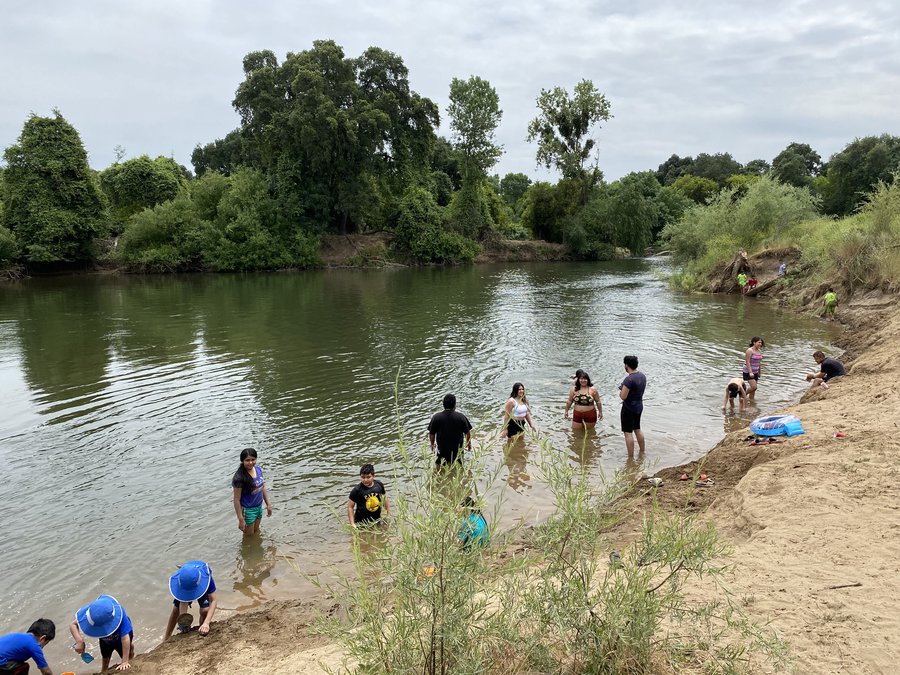If you’re looking for a respite during the heat, without air conditioning, one of the coolest spots in the area can be found along the Stanislaus River in one of the few remaining stands of riparian woodland in the Central Valley.
Not only does the thick canopy of oaks drop the temperature by 10 degrees but when the evening Delta breezes kick in Caswell Memorial State Park becomes even cooler.
The popular recreational destination is located about six miles south of Manteca at the end of South Austin Road.
The park has reopened for day use daily from 6 a.m. to 8 p.m. There is river access and trails as well as day use parking. For now, group picnics and camping — as in all state parks — are not allowed due to the COVID-19 pandemic. Social distancing rules are in effect and face masks are advised if you can’t stay six feet from people that are not in your household. The restrooms are open but you need to bring water for drinking
Water is now running high and fairly cold for limited river use. But as summer unfolds if you’re looking for a good old-fashioned dip in a river with fairly clear water, Caswell has two popular beaches — Willow Beach and Salmon Bend Camp Beach. Besides swimming and floating you can often find a beach volleyball game in progress. There are also various spots to try your luck at fishing.
By the time the Fourth of July rolls around the river as it passes by Caswell will have retreated a bit making frolicking in the water with appropriate precautions one of the coolest things you can do.
For now, the park’s trails and grassy areas are the lure. On a recent weekend some people were enjoying the water along the shore while others pitched day tents and enjoyed the meadows.
As always, Caswell is a place where you want to wear mosquito repellant.
Willow Beach is by far the main attraction during the summer. Ironically you’ll find more Bay Area folks taking advantage of the natural swimming along the Stanislaus River at Caswell than you will nearby residents on weekends and holidays. But mid-week — especially with camping currently not allowed — Caswell is fairly devoid of people.
You will not find another beach-river combo in the 209 as pleasant with a definite lazy feel although the Stanislaus between Knights Ferry and Caswell have some pleasant access points where you can have shaded water play such as McHenry Recreation Area south of Escalon off River Road. But they don’t have the beach or the expansive woodlands complete with trails to explore. Nor do you have very many options for camping as you do at Caswell.
The day use fee is $10.
When camping is finally allowed again, reservations during the summer and spring need to be made early. The campsites are typically sold out a week or two in advance from mid-May to September. When camping is allowed, the park can take reservations up to seven months in advance.
For camping reservations and park information, call 1-800-444-PARK. The park office is 209-599-3810.
You can reach Caswell by taking the Austin Road exit on Highway 99 and travel south to the road’s terminus where it takes you to the park’s entrance.
And while Caswell Memorial State Park is known to many as a recreational destination, it is also a 258-acre wilderness refuge made possible by the generosity of the Caswell family.
You can still catch a glimpse of the pristine oak-riparian woodlands that once flourished throughout the San Joaquin Valley.
Caswell Memorial State Park was donated to the state by the Caswell family in 1950 as a memorial to Thomas Caswell and his sons, Wallace and Charles Henry Caswell.
Henry and Helen Caswell’s daughter Mary Bucknam described Caswell as “the biggest oak grove in the whole Central Valley, and the only one that’s been untouched by any development except for the little path that goes through it.”
Bucknam said their grandfather had always intended to preserve the oak forest at the Ripon Ranch for future generations to enjoy.
That original parkland donated to the state by Jennie Whitmore Caswell, Helen Cross Caswell and her children — Earl Caswell, Mary Caswell Bucknam, Ruth Caswell Jorgensen, and Edith Caswell Wheeler — totaled 134 acres.
The family then sold the rest of the 640-acre property that the state would not accept.
The park officially opened to the public in 1958.





